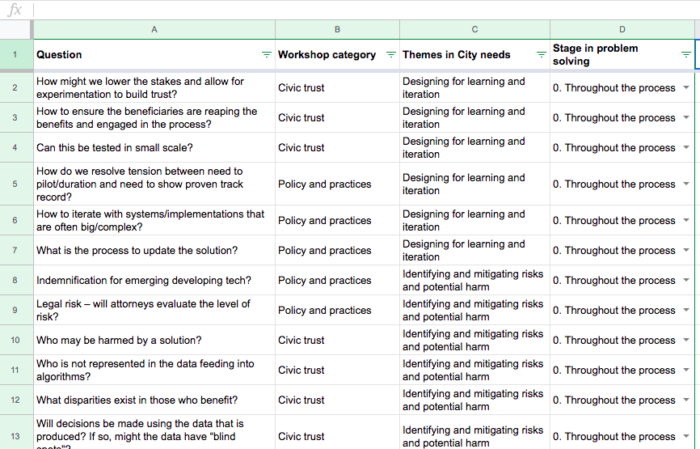Critical questions on ‘smart city’ tech: Continuing a conversation from Code for America 2019
Note: This post was written by Daniel Honker from the City of Austin, Kenya Asli from the City of Baltimore, and Greg Jordan-Detamore from the Sunlight Foundation.
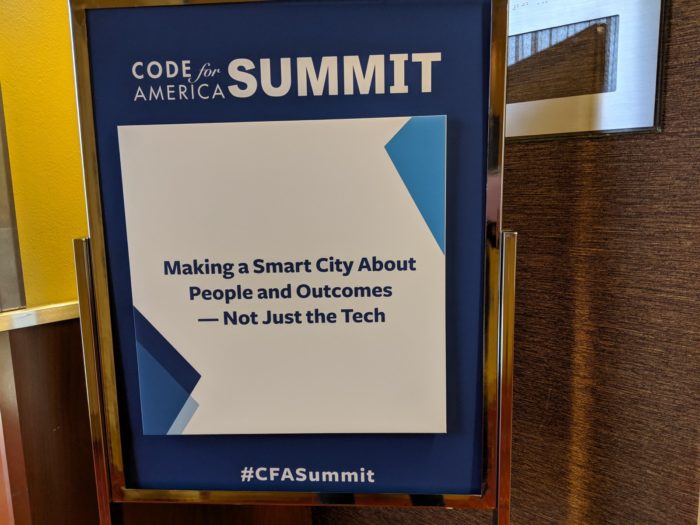
At last month’s Code for America Summit in Oakland, the three of us ran a workshop focused on identifying critical questions cities need to ask to ensure “smart cities” and emerging technology projects are focused on people and outcomes, and not just tech. This post recaps what we heard in that session, and invites you to help us keep the conversation going.
Why we brought the smart-city conversation to Code for America
Each of our organizations are working on the smart-city issue in various ways. Austin is looking at how to understand and prioritize problems to make more open and sustainable solutions. Baltimore is focused on transforming the city’s digital infrastructure to better serve all residents and create a seamless interaction between government and residents. And the Sunlight Foundation’s Open Cities team helps make municipal government across the country more transparent, accountable, and participatory.
The common thread in each of our efforts is that we’re bringing some healthy skepticism of “smart city” solutionism. We focused on this theme at Code for America for several reasons:
1. Cities are looking for independent and candid guidance on smart-city issues in a space filled with products and pitches.
City officials are dealing with a deluge of door knocks about new platforms, services, and solutions. But cities want more “real talk” on lessons learned and questions they have about evaluating, using, and governing emerging tech. We heard this loud and clear in our breakout session. Community members want to know what questions they should be posing for policymakers and where are the entry points for authentic community engagement in developing policy.
2. As we are seeing across the globe, technology alone won’t fix problems, and can actually make problems worse.
Solving real issues means we need to understand those challenges and the potential unintended consequences of tech — before we talk about how sensors, algorithms, and big data might help. There’s a swell of writing on how we need to look beyond tech for solutions (from researchers, open government advocates, and cities, to name a few), so we won’t belabor the point here.
3. The civic tech community — of which Code for America is a key organizer — can and should play a larger role in the smart-city conversation.
Civic tech has been somewhat quiet on the topic, partly because many in this network see the smart city as a hardware issue of sensors and infrastructure, compared to civic tech’s focus on software and services. Many also see the smart-city conversation as driven by vendors, in contrast to civic tech’s volunteerism and government bent. However, with cautionary tales of big data and machine learning mounting, the smart city needs an infusion of user-centeredness — which is in the blood of civic tech.
In a one-hour breakout session, we asked participants to identify issues cities need to address to go beyond the hype of “smart cities” and put residents at the center.
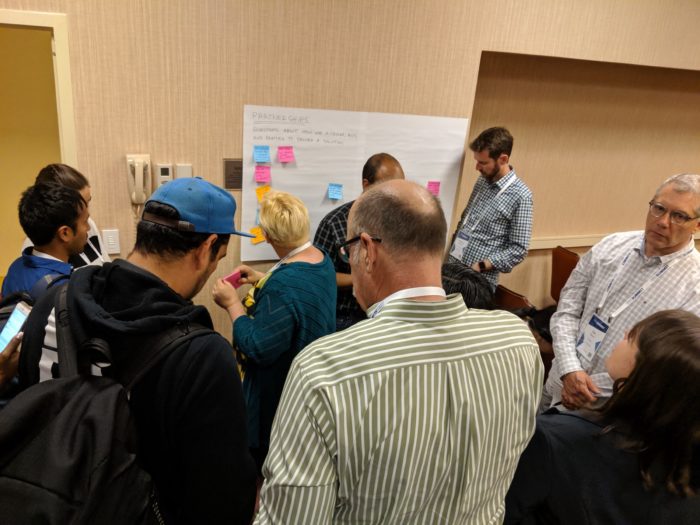
Critical questions participants identified
We asked participants to identify critical questions for cities to explore within three general buckets:
1. Civic trust: Questions about the benefits of a solution, and who that solution would serve. Civic trust encompasses the value proposition of services, as well as privacy, security, and transparency.
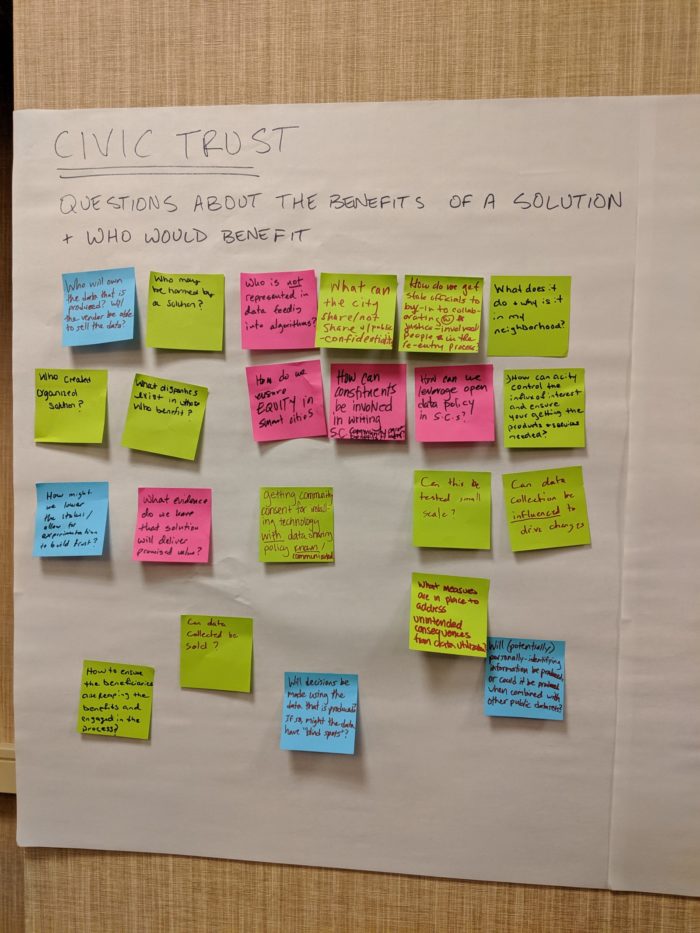
2. Policy and practices: Questions about how we evaluate, prioritize, and operate the solution within law, regulation, and policy. This includes issues of implementation and longer-term viability for funding, resourcing, and maintenance of a service.
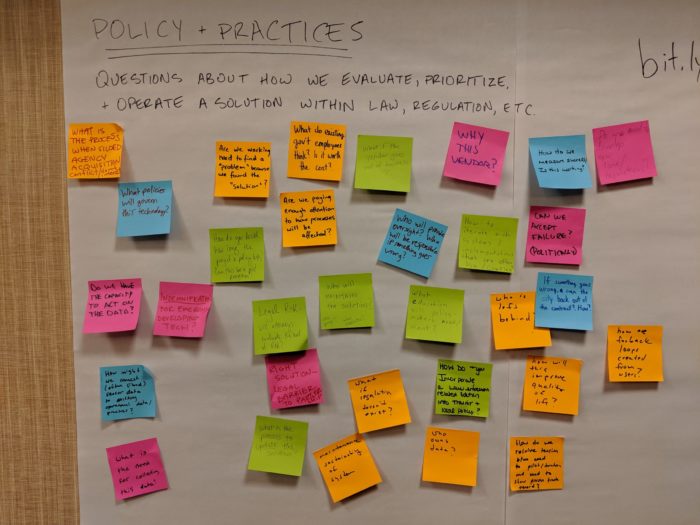
3. Partnerships: Questions about how a city acquires, buys, or partners to deliver and ensure accountability for the solution. This includes structures like public–private partnerships that dictate who “owns” the service and is responsible for its results.
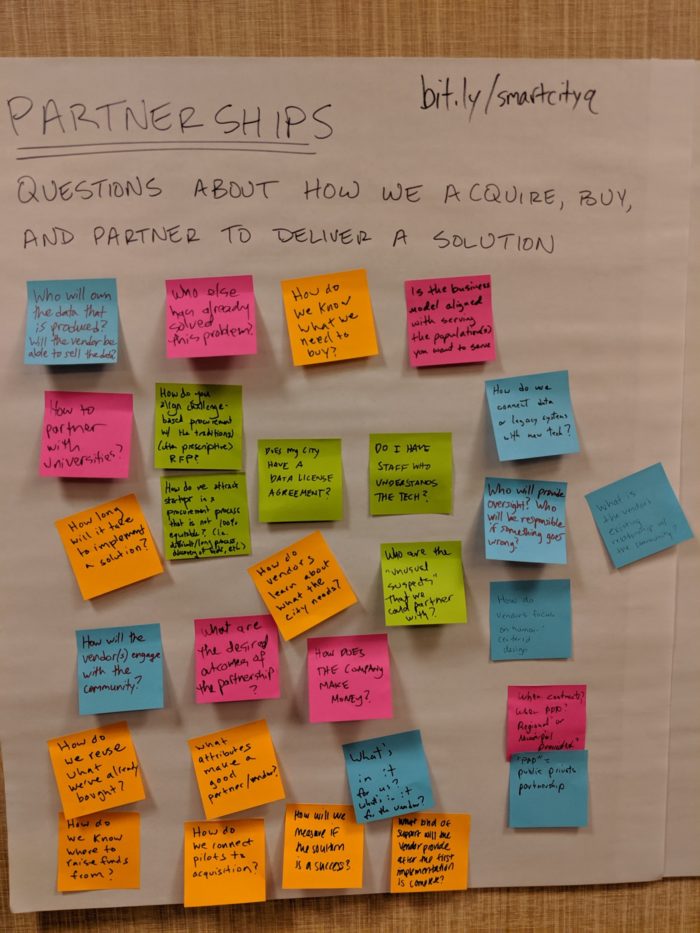
We have transcribed all the sticky notes into this spreadsheet — open to edits and comments from all.
When we looked at the critical questions participants raised, they mapped to a problem-solving cycle in which cities need to:
- Identify and frame the problem they are trying to solve
- Identify and test solutions to understand what is effective
- Implement and sustain solutions with appropriate resourcing, accountability, and learning
- Repeat
There were also a number of critical questions that cities should consider at any and all stages — including identifying and mitigating risks and potential harm, building in feedback and learning loops, and understanding legal issues.
Keep this conversation going: What other questions should cities be thinking about?
We welcome your participation in two ways:
1) Add to the list of critical questions. What critical questions are you thinking about in your city? You can add to the list we started at the workshop and comment on this post to spur some discussion.
2) Share your practices and lessons learned. Do you have a promising practice that has helped answer one or more of these critical questions? Please share in the comments below.
Thank you to the organizers at Code for America!
Thank you to Code for America for the opportunity to have this discussion at the Summit, particularly to Cori Zarek, Dan Hon, and Robin Carnahan for their help supporting the workshop and herding us cats.
